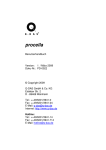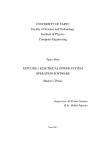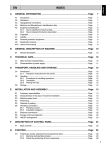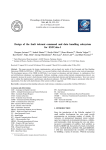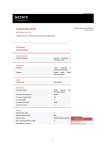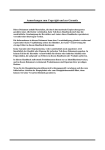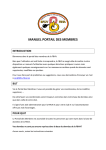Download BFM Production Handbook
Transcript
1 Production Handbook 2015-2016 Valid from September 1st 2015 2 Welcome to Tallinn University Baltic Film, Media, Arts and Communication School! This handbook provides essential information about School’s equipment and production facilities. It is also about the rules to know and procedures to follow in order to succeed in school assignments and projects. The faculty and administration of Tallinn University Communication School (BFM) wish You successful studies! Baltic Film, Media, Arts EVERY STUDENT AND FACULTY MEMBER OF BFM AGREES TO FOLLOW THE RULES AND PROCEDURES OUTLINED IN THIS HANDBOOK and 3 TABLE OF CONTENTS TABLE OF CONTENTS.................................................................................................... 3 PROJECT PRODUCTION WORKFLOW .............................................................................. 5 Head of Production.................................................................................................... 5 Project based production............................................................................................5 Project Production Forms........................................................................................... 5 Special Extracurricular Projects................................................................................... 7 Extending the Project Deadline................................................................................... 7 Production Levels...................................................................................................... 8 Archiving of the Projects............................................................................................ 9 Submitting the Projects for Grading........................................................................... 10 Project Deadline and Deleting of the Project............................................................... 10 Requirements for Using the BFM Logo and Credits ...................................................... 11 Requirements for Sponsor Logos............................................................................... 11 Project Workflow..................................................................................................... 12 The Role of Instructor in Production Process............................................................... 13 BOOKING AND USING THE EQUIPMENT.........................................................................14 Equipment Storage Rooms ...................................................................................... 14 Equipment Reservations........................................................................................... 15 Canceling a Reservation........................................................................................... 15 Equipment Check-Out.............................................................................................. 15 Equipment Check-In................................................................................................ 15 Equipment Use Notes...............................................................................................16 Battery Charging Policy............................................................................................ 16 Field Transfer of the Equipment................................................................................. 17 Accessing Equipment User Manuals .......................................................................... 17 Rental of School’s Equipment for Non-School Projects ................................................. 17 Equipment Inventory Days....................................................................................... 18 EQUIPMENT INSURANCE............................................................................................. 19 Where is insurance cover valid?................................................................................ 19 What is covered by the insurance? ........................................................................... 19 What is NOT covered by the insurance?......................................................................20 What to do if equipment gets damaged or broken?...................................................... 20 What to do if equipment is stolen?.............................................................................20 OVERVIEW OF EQUIPMENT AND FACILITIES.................................................................. 21 Camera Equipment.................................................................................................. 21 Field Monitors ........................................................................................................ 22 Portable Sound Equipment....................................................................................... 23 Lighting and Grip Equipment.....................................................................................24 Panther Pick Up Dolly and Tracks...............................................................................24 Cinema Hall............................................................................................................ 25 FILM STUDIO ............................................................................................................ 26 Shooting in Film Studio............................................................................................ 27 TELEVISION STUDIO...................................................................................................28 Using the TV Studio................................................................................................. 30 POST PRODUCTION CENTER........................................................................................ 31 Computer Lab......................................................................................................... 32 Video Editing Rooms................................................................................................ 32 Sound Studios........................................................................................................ 33 Accessing Sound Ideas Sound Effects Collection.......................................................... 33 Rules of Using the Facilities of BFM Post Production Center...........................................34 Application for Using the BFM Computer Network........................................................ 36 Opening New Project Folder Hard-disk Space.............................................................. 36 4 Computer Lab In Class Assignments and Projects........................................................ 36 Temporal Storage of Files in Local AV Scratch Drive ................................................... 36 Using the Guest Account.......................................................................................... 37 Using Your Personal External Hard-disk...................................................................... 37 Overview of Available Software in BFM Computer Network ..........................................38 GENERAL POLICIES.................................................................................................... 39 BFM Reserves the Following Rights Regarding Student Work......................................... 39 Take Care of Your Personal Belongings....................................................................... 39 No Smoking Policy...................................................................................................39 No Use of Alcohol in BFM Production Center ...............................................................39 Complaints, Questions and Comments....................................................................... 39 LIST OF PENALTIES AND FINES ................................................................................... 40 QUICK REFERENCE GUIDE TO THE CONTACTS...............................................................41 5 PROJECT PRODUCTION WORKFLOW Head of Production Location: Office hours: Narva Rd. 27, room N419 Consultation times agreed in advance by e-mail All student productions at BFM are coordinated by Head of Production. He assists students in production related issues and is responsible for planning and supervising the productions. Additional information about production policies and requirements: Toomas Sääs Head of Production Phone: (+372) 53909495 E-mail: [email protected] Project based production BFM uses a project based production approach for student productions. Each creative project goes through following stages. The most important part of any production is pre-production. The proper planning and working on your project idea in this stage will guarantee more effi cient and effective production and post-production. After completing the project it is mastered and archived together with the related documentation. The needed forms and materials for the production cycle are constantly updated and available at http://www.tlu.ee/en/production/Production-Forms Project Production Forms PROJECT PLANNING FORM Project Planning Form is a document filled by the Instructor of the course and submitted to the Head of Production in the beginning of the semester. The details of the projects planned during the course are submitted which is the basis for the tentative production schedule for the semester. Based on this information the Project Approval Forms are sent to the Instructor. APPLICATION FOR PROJECT APPROVAL Application For Project Approval is submitted to Head of Production for course and diploma projects. For exercises this application is not needed. In appendices are sumbitted project materials (script, shooting script, budget, production plan etc.) in electronic form on a DVD. The required materials are different depending on the department and the project type. Head of Production gives additional information about specific requirements. 6 PROJECT APPROVAL FORM Project Approval Form is the proof that the Student has completed all the required preparatory works for the project and is ready for production. The Project Approval Form is a document which Student must present: • every time before making equipment bookings • before opening the new Project folder hard-disk space in Post Production Center The Project Approval Form is given to student by the Instructor or Head of Production. The form must have a Instructor’s signature. For Course Project and Diploma Project also the signature of Head of Production is required. Signature of Head of Production is not needed for exercises. • • The form must be submitted to the course Instructor before grading. Without the confirmation of the Media Archive Specialist for the archiving of the project Instructor will not submit the final grade. APPLICATION FOR CREATIVE STIPEND For Diploma Projects and Course Projects students can submit to Head of Production the Application for Creative Stipend. The sum of the stipend is determined on project basis and is distributed according to the approved budget for creative stipends. The stipend is transferred to the Student‘s bank account. USAGE OF STIPEND REPORT Student must fill in the Usage of Stipend Report by the date fixed in the application and sumbit it to Head of Production together with the original invoices. When this report form is not not completed on time student’s acess to the equipment is limited. PRODUCTION PROJECT After completing the project Student submits to Head of Production the Production Project which consists of various documents such as contracts with the actors, music cue sheets, finalized budget etc. The materials required in Production Project are specified by department, project type (short film, documentary, TV broadcast) and project type (Course Project, Diploma Project). Additional information about the specific requirements from Head of Production. 7 Special Extracurricular Projects Special extracurricular projects must also have a signed Project Approval Form. For those projects signature of Chairs of each department or Head of Production is required. Without showing the Project Approval Form – NO ACCESS TO EQUIPMENT. Extending the Project Deadline Meeting the deadlines is a sign of professionalism and affects the final grade for the project. However there can be situations when meeting the fixed deadline is impossible. If this is the case then Students have the right to fill in the EXTENDING THE PROJECT DEADLINE FORM and have it signed by the Instructor and the Head of Production. 8 Production Levels All productions in BFM are categorized into three levels: • • • Level 1 - Exercise Level 2 - Course project Level 3 - Thesis project The following table gives an overview of each level: Level 1 Level 3 Level 4 Exercise Course project Thesis project Maximum shifts (8 hours) for using the equipment: Camera equipment: 1-3 3-5 for short feature 5-10 for documentary 7-14 for short feature 7-21 for documentary Using the basic camera equipment Unlimited access Unlimited access Sound equipment: 2 wireless mics, 1 boom mic, recording to camera (sound exercises are exceptions) Unlimited access Unlimited access Light equipment: Portable Light kits Unlimited access Unlimited access Panther Dolly and tracks: No access Access Access Access to Film Studio Max. 5 days Max. 7 days Max. 14 days Access to TV Studio Max. 2 day Max. 5 days Max. 10 days Maximum amount of editing footage captured to hard-drive: 2 hour 8 hours 25 hours Deadline to finish the project from signing the Project Approval Form: 2 month End of semester 1 year including building the set and cleaning the studio including set up and cleaning the studio 9 Archiving of the Projects Media Archive stores BFM student productions. Submitting the final project master and supporting materials to the archive is the last step in the production process. Media Archive database allows searching and previewing of graduation films, course projects and practical assignments produced during courses in BFM. The interface to enter and search the project data is Estonian Film Database. Archiving the project documentation: Location: Office hours: Narva Rd. 27, room N407 Monday to Friday 9:30-16:00 Thea Tael Editor of Media Archive Phone: (+372) 5086595 E-mail: [email protected] For every finished project student must send to e-mail [email protected] the following documents: • • • • Archiving Form Music Cue Sheet Dilogue List Beginning and End Credits The forms are available at Media Archive website The archiving of the projects is the following: Submit the final project (film, documentary, TV-projects etc.) as a Quicktime files and follow these guidelines: 1. Use the following settings: * DV PAL codec for standard definition projects filmed with MiniDV/DVCAM cameras * Apple ProRes HQ codec for HDV/DVCPROHD/HD projects 2. * * * Required language versions: Master WITHOUT ANY SUBTITLES Master with ENGLISH SUBTITLES Master with ESTONIAN SUBTITLES (optional) 3. Create JPG format still pictures (1 picture of the director, 5 from project itself, 5 from the film-set/location) and bring to Media Archive. NB! If you have edited your project outside the school system or on your own external harddisk then you should bring the master Quicktime files to Media Archive. 10 Submitting the Projects for Grading As a general rule the finished projects are copied to the specific course's „DropBox“ folder in SharedStorage network drive for grading (using Apple ProRes HQ Quicktime). Specific requirements are set by course instructors. Project Deadline and Deleting of the Project After the Project Deadline date the Project folder hard-disk space will be LOCKED for READ ONLY. 14 days after the Deadline date it is possible to read from project’s hard disk space but not to write on it (you can not add additional files). This time period is for Students to make their own backups of the project. Project Folder with all files included inside will be DELETED 14 days after Project Deadline. Student can extend the Project Deadline by filling the Extending the Project Deadline Form. The same rules apply also for the projects stored in Sound Studio computers. 11 Requirements for Using the BFM Logo and Credits All the student productions made in school must have the official animated BFM logo in the beginning of the project. The BFM logo is also used in the DVD covers and other promotional materials. The logo can be found at Shared Storage network drive at SharedStorage/BFM Media Archive Forms. The ending credits must finish with the copyright symbol, name of the school and the year of production: For example in English: © Tallinn University Baltic Film, Media, Arts and Communication School 2015 For example in Estonian: © Tallinna Ülikooli Balti filmi, meedia, kunstide ja kommunikatsiooni instituut 2015 Requirements for Sponsor Logos Sponsor logos in the beginning and end credits should not be too large and draw too much attention. The maximum size of one logo should not exceed 1/6 th of the screen width. Making the logos too large could mean that the project can not be shown on Estonian Public Television because of the legal limitations for sponsor logos. More information about the specific requirements from Head of Production. 12 Project Workflow In the beginning of the semester Instructors fill in PROJECT PLANNING FORM to plan the usage of the equipment for projects START OF PROJECT Exercise Approve your project idea with your instructor PRE-PRODUCTION Head of Production registers the project and hands out PROJECT APPROVAL FORMS to Instructors Fill out the PROJECT APPROVAL FORM Instructor signs the form Only Instructor’s signature is required on Project Approval Form Course Project and Diploma Project Fill out APPLICATION FOR PROJECT APPROVAL and submit the materials to Head of Production Head of Production signs Project Approval Form PRODUCTION EQUIPMENT ROOM Show Project Approval Form! Book the equipment EQUIPMENT ROOM Take out the equipment EQUIPMENT ROOM Return the equipment POST-PRODUCTION POST PRODUCTION CENTER Show Project Approval Form! POST PRODUCTION CENTER POST PRODUCTION CENTER Open the Project Folder harddisk space Picture editing Sound editing and mixing Fill out Archiving Forms and send to [email protected] ARCHIVING THE PROJECT FILES Submit the project master files to Johan Mattias Iho / Thea Tael Deleting the Project Folder Deleting theProject projectDeadline) folder (14 daysofafter (14 days after the project deadline) When there is no need to archive the project to BFM archive Thea Tael signs the you Project Formyour to confirm canApproval still archive projectthe to archiving Show your Project Form! ownApproval use. Make master DVD or Master to the tape GRADING THE PROJECT Return Project Approval Form to Instructor! No final grade without the Media Archive signed confirmation To complete the project submit the PRODUCTION PROJECT (required project materials) to Head of Production (for course and diploma projects) 13 The Role of Instructor in Production Process In beginning of the semester Instructors fill in PROJECT PLANNING FORM And send it to Head of Production [email protected] [email protected] Head of Production plans the production schedule and sends out the PROJECT APPROVAL FORMS for each project (sent to Instructor‘s e-maili) Instructor PRINTS out Project Approval Forms or asks the printed version from Head of Production (room N419) Instructor SIGNS Project Approval Forms and distribute to students (signature states that the preparation works is done and project is ready for production ) Instructor informs students: Project Approval Forms is a document that must be presented: When booking equipment When taking out equipment When opening Project folder in Shared Storage (Post Production Center) For Media Archive Specialist for signing (submitting project to archive) Without the confirmation of the Media Archive Specialist Instructor WILL NOT PUT OUT THE FINAL GRADE Exercise Only Instructor’s signature is required on Project Approval Form Course Project and Diploma Project Students fill out APPLICATION FOR PROJECT APPROVAL and submit the materials to Head of Production Head of Production signs Project Approval Form When there are several students involved in a project then the student producer can make a photocopy of the Project Approval Form so that each team mamber can present the form where required. Production Students archive the project IN EVALUATION of the project students return the Project Approval Form to Instructor Instructor controls that the Media Archive Specialist has signed the form Without the Media Archive confirmation Instructor WILL NOT PUT OUT THE FINAL GRADE There can be cases where the student project is not 100% finished by the time of the evaluation and grading. Regardless, there is still the requirement that all projects (including „work in progress“ projects) must be submitted to the archive before the evaluating. In archive such projects are stored with a label „WORK IN PROGRESS“ and are not made public outside the school. If student wants that his/her work is also shown publicly (film festivals, television, etc.) then it is possible to resubmit the final version of the project master files to the archive. 14 BOOKING AND USING THE EQUIPMENT Equipment Storage Rooms Location: Opening hours: Narva Rd. 27, Room N209, Room N111 Monday to Friday 9:30 – 12:00 and 14:30 – 17:00 Saturday and Sunday – CLOSED Booking and information: Phone: (+372) 6199907 E-mail: [email protected] Camera and Sound Equipment (Room N209): Tõnu Talpsep Technical Specialist Phone: (+372) 6199907 Mob: (+372) 5235684 E-mail: [email protected] Lighting Equipment, Camera Dolly and Tracks and Grip Equipment (Room N111): Raul Tõnurist Equipment Storage Technician Phone: (+372) 6199904 Mob: (+372) 5158693 E-mail: [email protected] Marko Järv Equipment Storage Technician Phone: (+372) 6199904 Mob: (+372) 5158693 E-mail: [email protected] 15 Equipment Reservations It is recommended to book the needed equipment for the Project as early as possible. This is crucial at the end of the semester when several projects could be in production at the same time. Equipment reservations for projects are served on “first come first served” basis. Students can reserve the equipment for the 8 hours shifts determined by the Project’s Production level. To BOOK equipment Project Approval Form must be shown to the Equipment Room staff. Canceling a Reservation Cancellations of booking must be done at least 24 hours in advance. Equipment Check-Out Don’t be Late for Your Check-Out. If something holds you up call to Equipment Room staff. If Student does not show up, equipment becomes available to other projects in 30 minutes. TEST ALL EQUIPMENT BEFORE LEAVING THE CHECK-OUT AREA. Any technical problems should be resolved at this time. Sign the Rental Agreement Contract. The Equipment Storage Room keeps one copy of the Contract. The other copy will be given to Student. The Student signing out the equipment is responsible for the safe return of every item signed for on the Rental Agreement Contract. If something turns up missing or damaged upon the return, the student will be held financially liable for the repair or replacement of that item! Equipment Check-In All rented out equipment must be returned on the date and time specified on the Rental Agreement. Don’t be late for your Check-In. If you will be late or cannot make it due to an emergency please call in immediately to make alternate arrangements. Another student may be waiting for the equipment you are returning. If Student will be late for equipment return more than 30 minutes he/she will be FINED 3.20 EUR (warning for the first occurrence). Staff member will check the returned equipment in the presence of the Student. Student signs the Rental agreement for the return of the equipment. 16 If there are missing or damaged items a fine amount will be assessed in student presence. Equipment Use Notes • • If there were malfunctions with the equipment while in use, PLEASE REPORT it upon check-in. Never attempt to repair equipment yourself, no matter how simple you think the repair may be. • Never leave equipment unattended! • Do not leave equipment unattended to the premises of BFM (for example to the Computer Lab or Editing Room). A FINE of 12.80 EUR will be administered. • Never drop off equipment without waiting for it to be checked back in. Student will be held financially responsible for all equipment checked out UNTIL both him/her and the on-duty Staff member has signed the Rental Contract confirming the return of the equipment. • • • • • • • • • When returning the equipment, make sure that it is packed up neatly. Tripod plate is fixed to the tripod head (not to the camera or side pockets of the tripod carrying case) Lenses are clean and with lens caps All wires and microphone cords are coiled neatly Tape is removed from the camera Equipment is transported in their cases or carrying bags There is no switching equipment between kits (battery from cam 3 should not be used with cam 5 etc.) Any light bulb that burn out during the production must be returned or you will be charged for the missing bulb. Battery Charging Policy The Equipment Room can not always guarantee a fully charged battery backs with every equipment. It is Student’s responsibility to charge the batteries for the cameras, sound mixers and recorders. If your shooting starts immediately after equipment check-out please notify the Equipment Room personnel a day before to make sure the camera package will have charged batteries. When returning the equipment in the morning, please leave the batteries charging over night. When returning gear straight from the shoot, charging of batteries can be made in equipment room. 17 Field Transfer of the Equipment As a rule all the rented out equipment must be returned to the Equipment Room for inspect ing before other student (or crew) can start to use the equipment. Remember that you are financially responsible for all the equipment listed on the Equipment Rental Agreement as long you have not returned in person all the equipment and both you and the BFM Staff member have signed the agreement for return. However in rare cases there may be a need to transfer the equipment on the field from one User to the other. If this is the case you must fill out the FIELD TRANSFER OF THE EQUIPMENT FORM available for download at at BFM Production centre website. This form must be signed in 2 copies by the student who hands over the equipment and the student who takes over the equipment. When returning the equipment the new User has to show the properly signed Field Transfer of the Equipment Form to the Staff member and sign it for the return of the equipment. If the equipment transfer from one student to another was made without filling the Field Transfer of the Equipment Form, BOTH PERSONS will be fined 12.80 EUR each for not following the rules of using the equipment. Accessing Equipment User Manuals Before taking out some equipment it is always good idea to make yourself familiar with the User Manual. Even if you know the basics of operating the camera, sound recorder etc. each model has its own specifications. Without knowing these details before shooting starts you may end up with questions without the time to find answer. So please read the manuals! User Manuals are available: http://www.tlu.ee/en/production/User-Manuals Rental of School’s Equipment for Non-School Projects The first priority of BFM equipment is to serve the class assignments and student productions. Use of School’s equipment and facilities for these projects is free of charge. In order to be able to use the equipment Student needs the signed Project Approval Form. It is also possible to rent out the School’s equipment for Non-School Projects on the basis of the rental prices fixed in the EQUIPMENT RENTAL PRICE LIST. 18 Equipment Inventory Days Twice a semester ALL BFM equipment must be returned to the Equipment Room for inventory. During the inventory days NO equipment is rented out. Inventory days are announced ahead so that Students can plan their productions. Twice a semester the Post Production Center is closed for inventory and maintenance. Dates are announced ahead. 19 EQUIPMENT INSURANCE When using the School’s equipment the Student who has signed the Rental Agreement takes full material responsibility for the safety of the equipment rented out. He/she is liable for any claim up to the purchase value of the lost, stolen or broken equipment. In case the loss or damage is covered by the insurance there is an access up to 10% or minimum 640.- EUR on any claim. The following information describes the terms and conditions of the insurance policy. Where is insurance cover valid? The insurance of the equipment is valid only in the borders of European Union countries. In case the equipment is taken outside of the borders of these countries there is no insurance coverage and the Student is fully responsible for any damage for which he/she is liable. What is covered by the insurance? Insurance case is an unforeseen and unexpected event, condition, act or responsibility. According to the insurance policy the possible causes for the insurance case can be: • • • • • • • damages which are caused by the insufficient qualification of the operator of the equipment and his/her negligence when operating the equipment; internal electrical and mechanical malfunctions of the device; fire, direct lightning strike, explosion, damages from the extinguishing water; damages because of the traffic accident to the vehicles transporting the equipment; intentional actions by the third persons dedicated to destroy the private property of others; hail, rain, storm, leaking fluids, damages caused by humidity; burglary. In case of burglary the insurance case is valid if the equipment was stolen or destroyed by: • breaking in, defined as theft from the equipment storage room by breaking or removing the lock or the door of the room; • robbery, defined as taking away the equipment by using physical violence or by direct threat of using violence; • intentional actions by third persons, understood as destroying or breaking the equipment during the robbery or breaking in. 20 What is NOT covered by the insurance? Do not use alcohol or drugs while using the equipment. According to the insurance policy any damage which occurred while the User of the equipment was under the influence of alcohol or any narcotic substance will not be refunded. Do not use the equipment in air or maritime transport (airplanes, air balloons, ships, boats etc). Insurance does not cover the damages when the equipment was installed, used or transported in air or maritime transport. Carefully protect the equipment from burglary between the shooting periods. Damage from burglary is covered only if the equipment storage room is equipped with the active security system that alarms the location guarded or there is organized a physical guarding. Do not leave the equipment to the hotel room. Insurance does not cover the theft or burglary from the hotel room. When staying in hotel, store the equipment in hotel room secu rity vault or leave for the storage to the hotel administrator. Never leave the equipment unsupervised in a car. Insurance cover is invalidated if equipment is stolen from an unattended car, even if the car has an alarming system. What to do if equipment gets damaged or broken? Follow these steps: 1. Call to the Technical Director Tarmo Rajaleid (+372 58100035) and inform about the accident. 2. When you get back to school immediately report the accident to the on-duty Equipment Room Staff. 3. In Equipment Room fill out the Report About Broken, Lost or Stolen Equipment where you must describe in detail when, what and how it happened. What to do if equipment is stolen? Follow these steps: 1. In case of theft of burglary immediately call to Police 110 and wait for their instructions. 2. Fill out the Police Report about the incident and write down the contacts of the police officer working on the case. 3. Call to the Technical Director Tarmo Rajaleid (+372 58100035) and inform about the incident. 4. When you get back to school immediately report the accident to the on-duty Equipment Room Staff. 5. In Equipment Room fill out the Report About Broken, Lost or Stolen Equipment where you must describe in detail when, what and how it happened. NOTE: Failure to follow any or all the above procedures may result in a denial of your claim and make you completely responsible for the loss or damage. 21 OVERVIEW OF EQUIPMENT AND FACILITIES Camera Equipment As the camera equipment is used from the very basic training assignments in undergraduate level to the production of the final thesis projects in graduate level the camera equipment can be divided into following categories: 4K cinema cameras, DSLR cameras, P2 cameras, HD cameras, DVCAM cameras, MiniDV cameras, Betacam SP camera and Triax studio cameras. Camera equipment Quantity 3 4K-cinema cameras Canon EOS C500 EF mount 1 NEW! Blackmagic Design URSA Mini 4.6K Digital Cinema Camera (EF-Mount) 2 with Convergent Design Odyssey Q7 4K external recorder, Zeiss Compact Prime optics, Zacuto Z-finder and Rig support, Follow focus and Petroff Mattebox with 256GB CFast 2.0 memory cards and Samyang optics (arriving in October) 2 DSLR cameras Canon EOS 5d Mark II 1 with RedRock Micro support, Chrosziel Mattebox and Follow Focus Canon EOS 7D 1 with RedRock Micro support, Chrosziel Mattebox and Follow Focus 9 Panasonic P2 cameras Panasonic AJ-PX800GH camera 1 Panasonic AG-HPX600EJB camera 3 Panasonic AJ-PX270 camera with 2x64GB MicroP2 cards Panasonic AG-HVX200 4 1 with 2x64GB MicroP2 cards (1xFujinon ZA17X7.6BRD-S lens) with 2x64GB MicroP2 cards (1xFujinon ZA17X7.6BRD-S, 2xFujinon ZA12X4.5BRD lenses) with FireStore FS-100 hard disk drive recorder and memory cards 13 HD cameras Panasonic AG-AC160A JVC GY-HD101E with FireStore DR-HD100E-80 hard disk drive recorder Canon XL H1 with FireStore disk drive recorder Sony HVR-Z1E 5 DVCAM cameras JVC KY-19 with Sony DSR-1P recorder Sony DSR-PD170P Sony DSR-PD150P SONY DSR PDX 10-P 16 MiniDV cameras Panasonic AG-DVX100BE Canon XL 1 Canon XM 2 Panasonic NV-GS 400 1 Betacam SP camera 2/3 inch Ikegami Betacam SP camera 3 Triax studio cameras Philips LDK100 9 2 1 1 1 1 2 1 7 2 4 3 1 3 22 As the fast development of high definition video technology will have a significant impact on the filmmaking process BFM believes that its students must be well prepared to work with high definition formats. However for cinematographers the practical hands on training on film cameras (both 35mm and Super 16mm) should be a part of their studies. School is making its best efforts to find additional financing and sponsors to provide the students the option to shoot some projects on a film stock. Cinematographers are using for exercises two ARRI SR II 16mm film cameras donated to BFM by Netherlands Film and Television Academy. Field Monitors Two kits of Panasonic BT-LH1700WE 17” LCD Widescreen Multi-Format Color Production Monitor can be used for monitoring high definition picture. For standard definition video portable Panasonic CRT monitor can be used. DSLR kits are equipped with Marshal Electronics VLCD70XP-HDMI 7" on camera monitors. HD cameras use four kits of SWIT S-1071HF 5” monitors. 23 Portable Sound Equipment The sound department is equipped with professional field sound recording systems for television and film production. Sound Equipment Qty Portable sound recorders Sound Equipment Qty Microphones NEW! Sound Devices 688 12-Input Field Production Mixer and 16-Track Recorder 1 Sennheiser MKH416 - P483U with windscreen and boom 8 NEW! Sound Devices 633 Compact Field Mixer Kit 3 Sennheiser ME-66 1 EDIROL R4-Pro timecode 4 channel HD recorder 2 Sennheiser MD-42 1 TASCAM HD-P2 TC recorder 4 Sony ECM-670 1 Neumann KM184 2 Portable sound mixers SQN-2S stereo 1 Neumann KM184 stereo pair 1 SQN-3MS 4-input mono 1 Rode NT4 stereo microphone 1 Stereo pair AKG C414 XLII 1 Neumann U-87 1 Headphones Sennheiser HD-280Pro 10 Audio-Technica ATH-M30 4 Neumann TLM-103 4 Sennheiser HD 433 2 Sennheiser E 602 II 1 Sennheiser HD 265 1 Shure SM57 2 Sony MDR7506 7 Sennheiser MD421-II 5 Sony MDR-V250V 1 Shure Beta 87A 2 Shure Beta 87C 2 8 Electro-Voice N/D767A 5 2 Beyerdynamic M58 4 Wireless microphone systems Lectrosonics SRb5P 2-channel diversity receivers Lectrosonics HH/E01+VMC handheld transmitters Lectrosonics HM/E01 Plug-On transmitters 2 Lectrosonics SMDB/E01 transmitters 12 DPA 4060 microphones Sennheiser EW-112-P-G2 20 9 Sennheiser EW 100 2 Sennheiser EW501-P plug-in 1 Audio-Technica AT803b lavalier 2 Audio-Technica AT-804 2 24 Lighting and Grip Equipment The following table gives and overview of the available portable lighting equipment: Equipment Qty Equipment Qty Lighting 150W ARRI Junior Fresnel 6 300W ARRI Junior Fresnel 650 W ARRI Junior 650 PLUS fresnel 2000 W ARRI Junior 2000 fresnel 5000 W ARRI Junior 5000 fresnel CHIMERA softbox for 5000W 6 6 6 3 2 ARRI 650 KIT (3x650W fresnel + 1x750W softbox) 800W Arri open face kit Compactbeam 2000 W (open) Solaris 1000 W (Fresnel ) Varibeam 800 W (open) Minispot 500 W (Fresnel) Daylight 575 HMI ARRI Daylight Compact Daylight 1,2 kW HMI ARRI Daylight Compact Kino flo 120 SYS-4804-F230 4ft System with 3200K and 5600K bulbs Kino flo 60 SYS-2404-F230 2 ft System with 3200K and 5600K bulbs Dedolight S3ME, Hustler Master Kit (4 lights+case) 2 2 4 Minispot 500 W (Fresnel) Lilliput 300 W (open) Lilliput 300 W (open) 2 Gulliver 300 W (open) 2 2 Lilliput kit (3x300 W lilliput + 3x minitripods) 3 Lighting grip and accessories Manfroto Avenger Butterfly frame (8x8 feet) 1 Snap in for super clamp (E600) 10 Sky hook (043) High Alu baby stand (A410B) Black heavy duty stand (626BU) Super steel stand (27OU) Mini backlite base male attachment (003M) 40” sliding leg century stand black (A215B) 40” detachable Century stand (A225SB) Light tripod Manfrotto 156 B Light tripod Manfrotto 052B Light tripod Manfrotto black 004B Light tripod Manfrotto metal 004MT Light tripod (heavy) Manfrotto Light tripod (with wheels) Manfrotto Autopole 100-170 Autopole 150-270 Griphead D200 Griphead D520 Griphead D 500 Magic arm (143N) 5 6 4 4 3 10 10 1 13 10 2 4 1 1 1 20 10 10 4 Stage clamp (C285) Stage clamp (C295) Super clamp Lite-Tite (knee for umbrella) Grip spigot (croko) Grip socket (croko) UV safety glass (for Compactbeam) Liliput dichroid Softbox 70x70 Softbox 50x50 (for Varibeam 800 W) Softbox 65x65 (for Liliput) Umbrella (reflector) 85 cm Umbrella (diffuser) 85 cm Umbrella (diffuser) 105 cm Lastolite reflector (large) Lastolite reflector (holder) Floppies and Cutters Scrims and Flags 5 5 10 7 3 2 2 1 2 1 1 5 2 2 1 1 10 20 2 2 2 5 1 2 6 11 1 Panther Pick Up Dolly and Tracks Panther Pick Up Dolly is equipped with Lightweight Jib Arm. It has both pneumatic and studio wheels and is equipped with two seats. There are 10 meters of straight steel tracks and half a circle of tracks. The system has both 100mm and 150mm bowl for attaching the camera tripod head. All the parts are packed for special cased for transportation. Second dolly, Panther Roller Plate, is a portable dolly unit. 25 Cinema Hall The 105 seat “SuperNova” cinema hall is equipped with the modern projection and sound equipment. The cinema hall uses Estonia’s first digital cinema projector with 4K resolution. The Sony SRX-R515 projector is the first in Estonia capable of projecting a 4K resolution image (4096x2160 pixels) onto the screen. The projector can play back 2K and 4K resolution movies from a DCI compliant DCP copy through the integrated SONY XCT-S10 server. The HDMI input of the projector also accepts images from an Apple iMac computer and Sony BDPS790 Blu-ray player. The use of other formats (HDCAM, Digibeta, Betacam SP, DVCAM, MiniDV, etc.) must be agreed upon in advance. In addition to the 4K projector, the cinema hall also uses a Sony VPLFH35 WUXGA (1920x1200 pixel) video projector that can be used for lectures and presentations. The cinema hall uses THX certified Procella Audio monitors (P815-FP, P18, P8), Lab.gruppen amplifiers (C28:4, C20:8X), and Biamp Nexia SP and Dolby CP750 processors for Dolby Surround 7.1 surround sound. The cinema hall can also be used as auditorium and conference hall. It is possible to use radio microphones and other sound equipment. Events in the hall can be recorded with a multicamera system and live-streamed over the internet. The “SuperNova” cinema hall is the venue for the student film festival “Sleepwalkers” and hosts, on a regular basis, movie premieres and meeting nights with authors. The cinema has also launched weekly cinema sessions that offer a top rate movie going experience. The acoustic design of the cinema hall was made by Akukon Oy. The final adjustments to the sound equipment were made by Anders Uggelberg from Procella Audio. The Sony 4K digital projector was set up by Miterassa OÜ and Dietrich Dumke from the Sony Europe office. The cinema hall’s equipment was delivered and installed by OÜ Digital Emotions. The cinema hall was officially opened on 14 April 2013. More information: Martin Ilves Projectionist Mob: (+372) 56803910 E-mail: [email protected] 26 FILM STUDIO Location: Narva Rd. 27, Room N113 Hours of operation: during the productions 7 days a week Booking and information: Toomas Sääs Film Studio Technical Specialist Mob: (+372) 53909495 E-mail: [email protected] BFM Film Studio (160 m2; 13.5x11.85x6.5 m) is customized specifically for film production. With a workshop, camera, sound and lighting equipment storerooms as well as make-up, dressing and group rooms, the film studio complex is able to offer a complete service. The film studio can be used for building sets for movies, short films and commercials. The room is also being used as a large TV studio (cabling for 8 cameras). The ceiling of the film studio is equipped with motorized lighting fixtures and there is also cabling for dimmers and DMX control. It is possible to use a black (360 degree), white and green background. The film studio’s lighting equipment, rails and the Panther Pick Up dolly are stored in a secure equipment storeroom. The film studio can also be used for larger official receptions, seminars and training events. It is also possible to use 130 folding chairs and movable tables. 27 Shooting in Film Studio Person who is given the keys to the Film Studio takes the full personal responsibility for the following: • • • • • • • • • • • • • • • • • • • • • • Sharing and collecting the Key Card sets of the Studio rooms to other crew members involved in the production. Instructing crew members how to arm and disarm the Security system. All crew members must DISARM the security system before entering the Film Studio rooms. While working in the Studio all doors must be kept CLOSED and LOCKED. After leaving the studio all doors must be CLOSED and LOCKED. All equipment and working tools should be used with care and after finishing the work be stored in organized manner (not be left laying around the set - Be tidy. Be organized. Be safe.) Equipment used in the production should never be left unattended. Student can be held personally responsible for any damage or theft of the School’s equipment from the Studio during the time-period of the production which occurs due to his/her negligence. He/she is liable for any claim up to the purchase value of the lost, stolen or broken equipment. In case the loss or damage is covered by the insurance there is an access up to 640.- EUR on any claim. Is responsible for the personal safety of the crew during the work in Studio. Is responsible for following the Fire Safety in the Studio during the work period. Makes sure that there is unblocked access to all fire extinguishers and exits and emer gency exits at all times. Makes sure that there is NO SMOKING in the Studio or NO USE of SMOKE/FOG MACHINES as these will turn on the smoke alarm system. When smoking or smoke machines are required on the set Student must inform the Film Studio Technical Specialist. Makes sure that NO ALCOHOL is used at any time regardless of the age. Emptied and cleaned beverage cans and bottles may be filled with non-alcoholic liq uids for use as props. When not in use, such items must be stored in a box or when in use on set clearly marked “DECORATIONS”. Must finish the shooting and the Studio cleaning up by the DEADLINE date specified in the form. If Studio rooms are handed over without proper cleaning up after the production the Student will be fined 64.- EUR. Must give back all the received Studio Key sets not later than on the DEADLINE date. There is a fine of 3.20 EUR for late returning of the keys. For loosing the Key the Student must refund the replacement of the lock and the keys. Student is fined up to 300.- EUR. 28 TELEVISION STUDIO Location: Narva Rd. 27, Room 109 Hours of operation: during the productions 7 days a week Booking and information: Kulno Kägu Studio Engineer Technician Tel: (+372) 56804006 E-mail: [email protected] Tõnis Peeter Kull Studio assistant Tel: (+372) 51964017 E-mail: [email protected] Television studio (106.4 m2, 11.2x9.5x6.5 m) can be used to make professional multi-camera recordings. Studio is equipped with four 2/3-inch sensor high definition cameras (3x Panasonic AGHPX600E and 1x Panasonic AJ-PX800GH) with the Volamp Camlinx II fiber optical camera channel and RCP-2050A Control Panel. Cameras have Fujinon ZA12X4.5BRD or ZA17X7.6BRD-S lenses with zoom and focus servo-controls, Swit S-1071HF monitors and Libec studio tripods. In addition to the studio functionality these cameras can also be used as ENG cameras with 2x 64GB Micro P2 card recording capability in professional 10bit 4:2:2 AVC-Intra 100 Mbps format. The number of cameras can be upgraded to total 8 using additional four Panasonic AJ-PX270 HD-cameras. In addition three 2/3-inch sensor standard definition Philips LDK100 Triax based cameras (support from Finland’s public broadcasting company YLE) are used for basic training in studio. Studio lighting is controlled by Avolites Pearl Tiger console. There are 36 channels of 10A dimmers (3x SRS Light Design DDP1210B-8). Standard lighting consists of 40 fixtures: 18x pole operated Ianiro Solaris Fresnels (6x 2kW, 12x 1kW), 6x 2kW Altman Open Face Soft-Lite, 4x Balcar Quadlite 200, 4x Balcar Duolite 100, 2x 1kW Fresnel, 4x 500W Fresnel. For special needs additional lighting from school’s lighting storage can be added. The studio is equipped with motorized lighting trusses with cabling for dimmers and DMX control. There is a possibility to use black, white and green background curtains. In Control Room Ross Video Carbonite 2 16-input 2 M/E Live Production Switcher with XPression Prime graphics allow working in high definition (720p/50, 1080i/50, 3G 1080p/50), standard definition 576i/50 and has also the possibility to work with four 4K UHD sources. 29 HD-SDI signal routing is performed by 40x40 Blackmagic Design Compact Videohub with Master Control and Smart Control panels. Two BlackMagic Design Hyperdeck Studio Pro SSD recorders provide 10bit 4:2:2 recording and playback in industry standard formats Apple ProRes 422 HQ, Avid DNxHD, Uncompressed QuickTime. Recorders have support for 4K UHD and 6G-SDI. Thunderbolt connestion to iMac workstastion provide fast access to the central media storage system. Video monitoring uses two Sony FWDS46H2 multiviewer screens and several 21,5-inch Swit S-1221HS monitors. Signal quality control is maintained using Blackmagic Design SmartScope Duo 4K and near Grade 1 quality 17-inch JVC DT-V17G15 monitor. Studio intercom system consists of Riedel Performer C44plus System and wireless Clearcom FreeSpeak system. Sound Control Room has Avid S3L System 16 Controller running the Venue software with AAX plugins. It can operate together with the Avid ProTools system providing 64-channel I/O over AVB protocol. Genelec 8030 monitors and 7050 subwoofer provide calibrated stereo monitoring. Various microphones are available for studio and location needs. Panther Pick Up dolly and rails are stored in a secure equipment storeroom and accessible for studio use. The TV studio can also be used for larger official receptions, seminars and training events. It is also possible to use 130 folding chairs and movable tables. More information about the equipment and the use of studio from Studio Engineer Technician Kulno Kägu and Studio Assistant Tõnis Peeter Kull. 30 Using the TV Studio Person who is given the keys to the TV Studio takes the full personal responsibility for the following: • • • • • • • • • • • • • • • • • • • • • Sharing and collecting the Keys of the Studio rooms to other crew members involved in the production. Instructing crew members how to arm and disarm the Security system. All crew members must DISARM the security system before entering the TV Studio rooms. While working in the Studio all doors must be kept CLOSED and LOCKED. After leaving the studio all doors must be CLOSED and LOCKED. All crew members must ARM the security system after finishing the work in the Studio. All equipment and working tools should be used with care and the after finishing the work be stored in organized manner (no cables etc. left laying around the set - Be tidy. Be organized. Be safe.) Equipment used in the production should never be left unattended. Student can be held personally responsible for any damage or theft of the School’s equipment from the Studio during the time-period of the production which occurs due to his/her negligence. He/she is liable for any claim up to the purchase value of the lost, stolen or broken equipment. In case the loss or damage is covered by the insurance there is an access up to 640.- EUR on any claim. Is responsible for the personal safety of the crew during the work in Studio. Is responsible for the Fire Safety in the Studio during the work period. Makes sure that there is unblocked access to all fire extinguishers and emergency exits at all times. Makes sure that there is NO SMOKING in the Studio or NO USE of SMOKE/FOG MACHINES as these will turn on the smoke detection system. When smoking or smoke machines are required on the set Student must inform the Post Production Assistant before starting work. Makes sure that NO ALCOHOL is used at any time regardless of the age. Emptied and cleaned beverage cans and bottles may be filled with non-alcoholic liq uids for use as props. When not in use, such items must be stored in a box or when in use on set clearly marked “DECORATIONS”. Must finish the shooting and the Studio cleaning up by the DEADLINE date specified in this form. If TV Studio rooms are handed over without proper cleaning up after the production the Student will be fined 32.- EUR. Must give back all the received TV Studio keys not later than on the DEADLINE date. There is a fine of 3.20 EUR for late returning of the keys. For loosing the keys the Student must refund the replacement of the lock and the keys (will be fined up to 300.- EUR. 31 POST PRODUCTION CENTER Location: Office hours: Narva Rd. 27, Rooms N512 Monday to Friday 09:30 – 21:30 Booking and information: Phone: (+372) 6199925 E-mail: [email protected] Johan-Mattias Iho Post Production Center Administrator Phone: (+372) 53041288 E-mail: [email protected] Sander-Kalle Somma Post Production Center Assistant Phone: 58062777 E-mail: [email protected] 32 Computer Lab Location: Narva Rd. 27, Room N507 Hours of operation: Monday to Friday 09:30 – 21:30 Computer Lab is equipped with 17 seats of iMac 21.5” (2.7 GHz Quad-Core Intel Core i5, 8GB SDRAM) and various video and sound editing software. Besides the lectures and practical training, students can use these computers to edit their assignments. All computers are part of a storage area network (SAN) and can access the media files stored on a 40 TB media server. Computer lab has Apple Authorised Training Centre‘s certificate. Video Editing Rooms Location: Narva Rd. 27, N421-N424, N426-N429 Hours of operation: 7 days a week Students can edit their individual projects in eight separate Editing Rooms using Final Cut Pro and Avid Media Composer on Mac Pro workstations. Also Adobe Creative Clouds applications can be used. To guarantee the standardized sound monitoring across the post production cycle both editing rooms and sound editing studios are equipped with Genelec 8030 active monitors. There is also installed Avid Media Composer software in all editing rooms. Ask additional information from the assistant. Using Avid in the Editing Rooms 1. Ask Post Production Center Assistant to create a project folder for the Avid project 2. AVID disk image is copied to the project folder 3. Mount the AVID disk image (double click) 4. When opening Avid select External project - Select the location of AVID disk image in your project folder 5. Set the Media Creation Directory - Select the location of AVID disk image in your project folder. Save both Avid project and media files on the AVID disk image in your project folder. NB! Do not open the Avid disk image from two or more computers at the same time! This can lead to data corruption in your disk image. For help contact Post Production Center assistants. 33 Sound Studios Location: Narva Rd. 27, Rooms N308, N310, N317, N318, N214 Hours of operation: 7 days a week Booking and information: Raul Aan Sound Engineer-Designer Tel: (+372) 5113337 E-mail: [email protected] The BFM study complex has two sound studios and two sound editing rooms that offer a complete solution, from multi-track recordings and audio editing up to Dolby Surround 7.1 mastering. The sound studio complex was designed taking into account film and TV production audio requirements as well as music production needs. The sound studios have a trunk cable connection with the TV and film studios on the first floor of the building and also with the Tallinn University ceremonial hall, which gives the option for catering to large scale recordings and live events. It is also possible to use the sound studios for practical workshops. The first sound studio (54 m2; 212.5 m3; 8.65x6.3x3.9 m) uses Dolby Surround 7.1 compliant monitoring equipment, THX certified Procella Audio monitors (primary monitors P815-FP, subwoofer P18, surround monitors P8), Lab.gruppen amplifiers (C28:4 and C20:8X) and a Biamp Nexia SP processor. The monitoring solution was developed by Anders Uggelberg from Procella Audio in Sweden. The final studio calibration was performed by Mark Kenna from Film Sound Consultant in England. The Apple MacPro workstation uses the Avid ProTools HDX system with Icon D-Command controller (a total of 40 faders and Surround Panner option) and Avid HD I/O 16x16, AVID PRE and AVID SYNC HD. The Waves Mercury Native plug-in collection is also installed. The equipment room has a Sony VPLFH30 WUXGA (1920x1200 pixel) video projector installed. The second sound studio (19.5 m2; 50.7 m3; 3.9×5.0×2.6 m) and the two sound editing rooms use Avid ProTools HD Native Thunderbolt HD OMNI system with 5.1 Genelec (8030 and 7050) monitoring and Avid Artist Mix and Artist Control surfaces. Second studio has in addition Avid HD I/O 16×16 and two Avid PREs that can be shared with first sound studio. Accessing Sound Ideas Sound Effects Collection The School has purchased a license to use the Sound Ideas Sound Effects Series 6000 Collection in the student productions. The 18 DVD-disk of sound files are stored in the central media server and can also be accessed from Sound Studios. 34 Rules of Using the Facilities of BFM Post Production Center Each Baltic Film and Media School Student and Faculty Member (hereinafter named the User) agrees to follow these prescriptions when using the facilities of BFM Post Production Center: • For bookings student must have a signed Project Approval Form • Usage of the rooms is divided into two shifts: • 1) Morning shift 9:30 - 16:30 • 2) Evening shift 16:30 - 9:30 morning • At once it is allowed to book up to 6 shifts • The User must book the time for the usage of the Rooms in advance. • The booking schedule is managed by the Post Production Center Assistants • in Post Production Center Office (N512) - office hours according to the posted schedule. • User gets the permission to work in Rooms only after signing the Permission Form. • Cancelling the Room Reservation • Cancellations of booking must be done at least 24 hours in advance. • Sign IN for the KEY CARD • The User must arrive not later than the booked timeslot. • There is a 30 minute grace period from the beginning of the time slot until the reservation will be cancelled and the Room will be given out to other students waiting. • If you will be late for a reservation, call the Post Production Center Office – phone (+372) 6199925. • After completing the Permission Form User receives the KEY CARD for the Room. • Keep the doors CLOSED • While working User must keep the door of the Room CLOSED and LOCK THE DOOR after finishing the work. • Responsibility for the Security • By working in the Room under the permission the User accepts responsibility for the security of the Room and its equipment during working period and any loss or damage, which occurs due to his/her negligence. • He/she is liable for any claim up to the purchase value of the lost, stolen or broken equipment. In case the loss or damage is covered by the insurance there is an access up to 640.- EUR on any claim for which the User is liable. • • Clean up before leaving • After finishing the work the User makes sure that the Room will be in the same condition as in the beginning of the work. • Do NOT store any production or post-production materials (such as tapes, DVD-s, CDs etc.) or any personal belongings anywhere in the Rooms. • Anything left behind at the end of the day WILL be removed to the LOST AND FOUND box in the Post Production Center Office (N512). • Baltic Film and Media School is not responsible for theft or damage done to personal property left unattended in any of the rooms. • Sign OUT and return the KEY CARD • User must personally return the key card to the Post Production Center Assistant (in room N512) as soon as the User has finished his/her work for that day. • When working in the Room over night (Monday to Friday 21.30 – 9:30) or during the weekend (Saturday and Sunday 24h) User must return the KEY CARD on the first following workday not later than 13 o’clock afternoon. 35 • • • • • • • There is a FINE of 3.20 EUR for late returning of the keys (warning for the first occurrence). For loosing the key card the User must refund the replacement of the card. Other Guidelines Do not take out the video tape decks or any other equipment from their rooms with out asking the Post Production Center Assistant. All the equipment and also cables must be returned to their original location after using them in other rooms. On the tape decks is written the number of the room where the equipment should be stored. The sound monitors in the Sound Studios are carefully calibrated for proper balance. Do not touch the volume knobs on the monitors but rather adjust your output level from the computer or mixer. Classes have priority in Computer Lab, Editing Rooms and Sound Studios. Always check the availability of the room before planning to use these rooms for your Project. 36 Application for Using the BFM Computer Network In order to get access to the BFM computer network each Student and Faculty member must fill in APPLICATION FOR USING THE BFM COMPUTER NETWORK. The forms are available at Post Production Center Office. Opening New Project Folder Hard-disk Space For each project coming to post-production Student needs a properly filled and signed Project Approval Form. Project Approval Form must be shown before opening the new Project folder harddisk space Depending on the Production level the Project folder size is limited. Computer Lab In Class Assignments and Projects • For every class projects in Computer Lab is created a CLASS FOLDER with the name of the lecture. • This folder is Read-only which means that students taking part of that lecture can access the materials needed for completing the class assignments (for example to edit a trailer from the material provided). • It is NOT POSSIBLE to WRITE to this folder or add additional materials. • Students can save their version of the assignment to their PROJECT Folder • When the project is finished the final version should be copied to DROP BOX in the CLASS FOLDER for previewing and evaluating by the Instructor. Temporal Storage of Files in Local AV Scratch Drive • ATTENTION! Computers local AV Scratch hard drives can be WIPED OUT whenever they get full and the room is needed! • Local AV Scratch disk is used only for capturing and not for long term storing the media files. As soon as you have finished the capturing COPY the contents of the folder you created in AV Scratch to your Project folder or your own external hard-disk. • It is the responsibility of each Student to copy the files from AV Scratch to Project folder! • DO NOT EXPECT FINDING YOUR FILES FROM THE LOCAL AV SCRATCH AFTER THE DISK HAS BEEN CLEANED UP! 37 Using the Guest Account • • ATTENTION! Guest User account will DELETE all the files under the Guest account after logging out! Files stored on external hard-drives, AV Scratch and SharedStorage are saved. Using Your Personal External Hard-disk If you want to make a personal backups of your work or edit your projects at home or on your laptop it is recommended to invest in an External Firewire or USB 3.0 harddrive. Please contact Post Production Center assistants to have your Firewire drive formatted to work best with BFM computer systems. Also USB flash memory sticks are useful for storing your project files and transferring smaller files. 38 Overview of Available Software in BFM Computer Network Software installed in Computer Lab and in Editing Rooms Final Cut Pro X 10.2.1 Motion 5.2.1 Compressor 4.2 Event Manager X 7toX for Final Cut Pro X XtoCC for Final Cut Pro X XtoPro Audio Convert Marquis Broadcast DIGITAL REBELLION Preference Manager CDClipMerger 3.0 (Convergent Design) Cinema Raw Development (Canon C500) Final Cut Studio: Final Cut Pro 7.0.3 Soundtrack Pro 3.0.1 Compressor 3.5.3 DVD Studio Pro 4.2.2 Color 1.5.3 Motion 4.0.3 Live Type 2.1 Cinema Tools 4.5.1 Avid Media Composer 8.4 Avid Protools 11.3 Adobe Creative Cloud 201 Davinci Resolve Lite 11 Frameforge Previz Studio Pro 3 Supramotion Sublime HD 2.1.0 Celtx Open Office Apple Pages Apple Numbers Apple Keynote Safari Firefox Google Chrome Skype Cyberduck FTP Simply Burns Blackmagic Disk Speed Test DigiDoc3, ID-Card Utility Quicktime 7 Quicktime X VLC Player Flip for Mac REDCINE X MPEG Streamclip Handbrake Gimp Audacity CCCleaner Caffeine UnRarX The Unarchiver Paragon NTFS for MacOX 39 GENERAL POLICIES BFM Reserves the Following Rights Regarding Student Work Rights to Show Student Works All projects made with BMF equipment may be included, without additional permission of the filmmaker, cast or crew, in promotional videos and DVD's about the BFM program and/or streamed on the web. By using BFM facilities and equipment you are giving an implied permission to Tallinn University Baltic Film, Media, Arts and Communication School to use your film in these ways. Student Image/Likeness Students attending classes at BFM or on shoots for BFM projects may have their likeness captured on film or video and have their images distributed in BFM promotional brochures, videos, films, DVD's, and on the Internet. Take Care of Your Personal Belongings Do NOT store any production or post-production materials (such as tapes, DVD-s, CD-s etc.) or any personal belongings anywhere in the Computer Lab, Editing Rooms, Sound Studio or Television Studio facilities. Anything left behind at the end of the day WILL be removed to the LOST AND FOUND box in the Post Production Center Office (N512). BFM IS NOT RESPONSIBLE FOR THEFT OR DAMAGE DONE TO PERSONAL PROPERTY LEFT UNATTENDED IN ANY OF THE ROOMS. No Smoking Policy Smoking is strictly prohibited on the facilities of Tallinn University. No Use of Alcohol in BFM Production Center There is no use of alcoholic beverages in Film and TV Studios or Post Production Center at any time regardless of the age. When drinking is required on the set because of the story then emptied and cleaned beverage cans and bottles may be filled with non-alcoholic liquids for use as props. When not in use, such items must be stored in a box or when in use on set clearly marked “DECORATIONS”. Complaints, Questions and Comments Any problems, complaints, questions, or suggestions about any policy, the equipment in general should be addressed to the Technical Director Tarmo Rajaleid [email protected]. 40 LIST OF PENALTIES AND FINES • Failure to return the equipment on time more than 30 minutes FINE 3.20 EUR (warning for the first occurrence) • Leaving equipment unattended to the premises of BFM (example to the Computer Lab or Editing Room) FINE 12.80 EUR • Making equipment transfer from one student to another without filling the Field Transfer of the Equipment form – FINE 12.80 EUR for both students • Not cleaning up the Film Studio after the production FINE 64.- EUR • Not cleaning up the TV Studio after the production FINE 32.- EUR • Late returning of KEYS in Post Production Center Rooms and in Film Studio FINE 3.20 EUR (warning for the first occurrence) • Loosing the Key Card of Editing Rooms or Studios Student must refund the replacement of the key card • Broken or lost equipment Price charged to fix or replace it In case the insurance coverage – liability up to 600.- EUR In case no insurance coverage – full liability for the price of the equipment stolen or lost The Fine Decision Order can be appealed within 48 hours with written appeal to Director of Baltic Film, Media , arts and Communication School. ALL FINES MUST BE PAID BEFORE YOU ARE ALLOWED TO MAKE EQUIPMENT OR ROOM RESERVATIONS OR CHECK OUT ANY ADDITIONAL EQUIPMENT. If at the end of the semester fines are still outstanding an academic hold (preventing registration, graduation, use of other university facilities, etc.) will be placed upon the student's account until the amount is paid. Broken, damaged and lost equipment takes approximately three to six weeks to either be re paired or replaced. Therefore please treat the equipment with respect. If you break it, you not only hinder your production, but all the other students' as well. 41 QUICK REFERENCE GUIDE TO THE CONTACTS Tarmo Rajaleid Technical Director Phone: (+372) 6199916 Mob: (+372) 58100035 E-mail: [email protected] Television Studio Kulno Kägu Studio Engineer Technician Mob: (+372) 56804006 E-mail: [email protected] Toomas Sääs Head of Production Phone: (+372) 6199915 Mob: (+372) 53909495 E-mail: [email protected] Tõnis Peeter Kull Studio assistant Tel: (+372) 51964017 E-mail: [email protected] Camera and Sound Equipment Storage Phone: (+372) 6199907 E-mail: [email protected] Tõnu Talpsep Technical Specialist Phone: (+372) 6199907 Mob: (+372) 5235684 E-mail: [email protected] Lighting Equipment Storage Phone: (+372) 6199904 Mobile: (+372) 5158693 E-mail: [email protected] Raul Tõnurist Equipment Storage Technician Phone: (+372) 6199904 Mobile: (+372) 5158693 E-mail: [email protected] Marko Järv Equipment Storage Technician Phone: (+372) 6199904 Mobile: (+372) 5158693 E-mail: [email protected] Film Studio Toomas Sääs Film Studio Technical Specialist Phone: (+372) 6199915 Mob: (+372) 53909495 E-mail: [email protected] Post Production Center Office Phone: (+372) 6199925 E-mail: [email protected] Johan-Mattias Iho Post Production Center Administrator Mob: (+372) 53041288 E-mail: [email protected] Sander-Kalle Somma Post Production Center Assistant Phone: 58062777 E-mail: [email protected] Sound Studios Raul Aan Sound Engineer-Designer Tel: (+372) 5113337 E-mail: [email protected] Media Archive Thea Tael Editor of Media Archive Phone: (+372) 5086595 E-mail: [email protected] Supernova Cinema Martin Ilves Projectionist Mob: (+372) 56803910 E-mail: [email protected]









































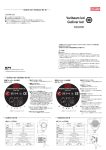
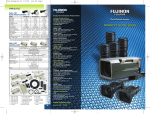
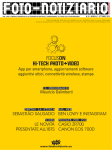
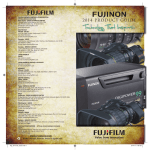


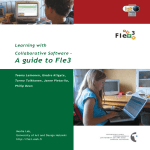
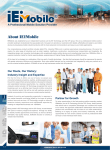



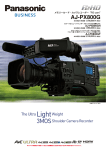
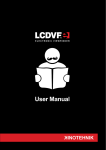
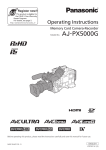
![MR-1300MJカタログ [PDF: 152KB]](http://vs1.manualzilla.com/store/data/006661885_2-3cd0aa62b889cba274bce66215fafe47-150x150.png)
